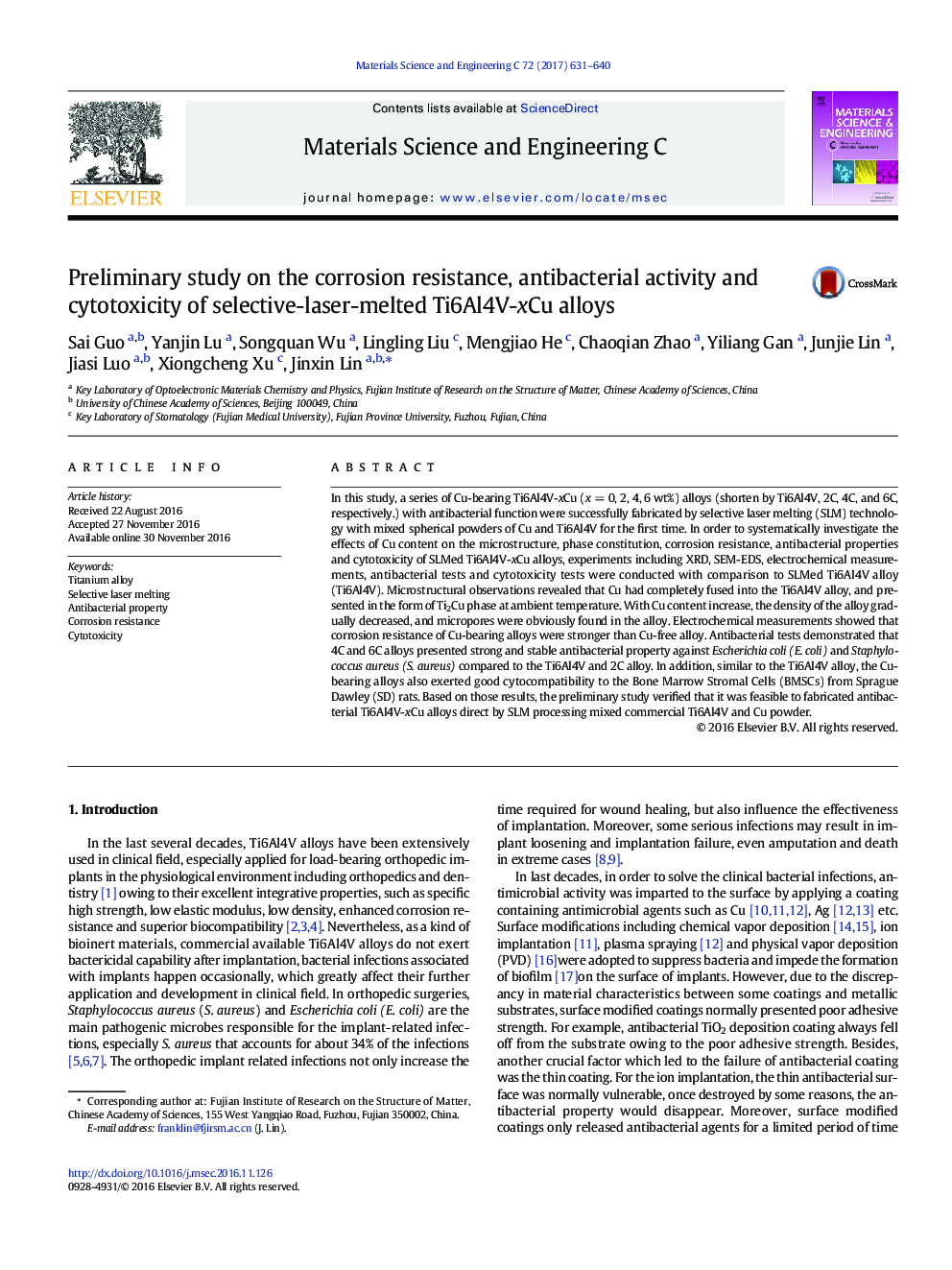| کد مقاله | کد نشریه | سال انتشار | مقاله انگلیسی | نسخه تمام متن |
|---|---|---|---|---|
| 5435245 | 1509149 | 2017 | 10 صفحه PDF | دانلود رایگان |

- Direct SLM of Ti6Al4V-xCu alloys by mixing Ti6Al4V and a few Cu powder is feasible.
- The trapped gas porosity exhibits a limited effect on the corrosion resistance.
- SLMed Ti6Al4V alloys with 4 and 6Â wt% Cu exhibited stronger antibacterial property.
- SLMed Ti6Al4V-xCu alloys show good cytocompatibility.
In this study, a series of Cu-bearing Ti6Al4V-xCu (x = 0, 2, 4, 6 wt%) alloys (shorten by Ti6Al4V, 2C, 4C, and 6C, respectively.) with antibacterial function were successfully fabricated by selective laser melting (SLM) technology with mixed spherical powders of Cu and Ti6Al4V for the first time. In order to systematically investigate the effects of Cu content on the microstructure, phase constitution, corrosion resistance, antibacterial properties and cytotoxicity of SLMed Ti6Al4V-xCu alloys, experiments including XRD, SEM-EDS, electrochemical measurements, antibacterial tests and cytotoxicity tests were conducted with comparison to SLMed Ti6Al4V alloy (Ti6Al4V). Microstructural observations revealed that Cu had completely fused into the Ti6Al4V alloy, and presented in the form of Ti2Cu phase at ambient temperature. With Cu content increase, the density of the alloy gradually decreased, and micropores were obviously found in the alloy. Electrochemical measurements showed that corrosion resistance of Cu-bearing alloys were stronger than Cu-free alloy. Antibacterial tests demonstrated that 4C and 6C alloys presented strong and stable antibacterial property against Escherichia coli (E. coli) and Staphylococcus aureus (S. aureus) compared to the Ti6Al4V and 2C alloy. In addition, similar to the Ti6Al4V alloy, the Cu-bearing alloys also exerted good cytocompatibility to the Bone Marrow Stromal Cells (BMSCs) from Sprague Dawley (SD) rats. Based on those results, the preliminary study verified that it was feasible to fabricated antibacterial Ti6Al4V-xCu alloys direct by SLM processing mixed commercial Ti6Al4V and Cu powder.
Journal: Materials Science and Engineering: C - Volume 72, 1 March 2017, Pages 631-640